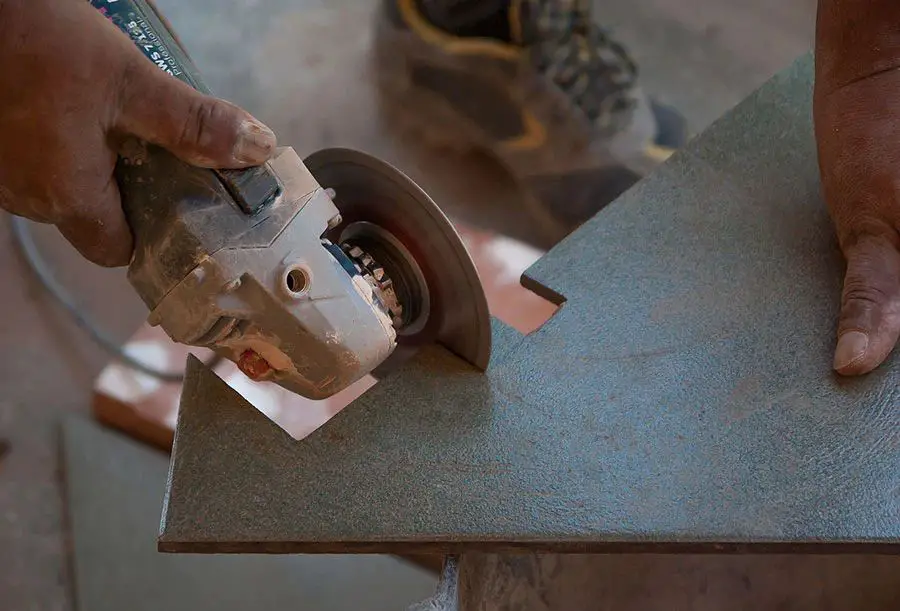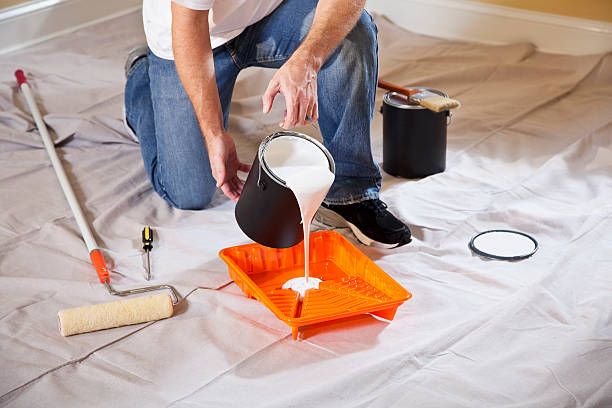What Is The Best Thing To Cut Tile?
Cutting tile is an important skill for any home improvement project involving tile installation. Choosing the right tool for cutting tile makes the job much easier and can help ensure a professional result. This article will provide an overview of the best tools for cutting different types of tile materials. We’ll compare manual tile cutters, wet saws, grinders, glass cutters, and nippers. The pros and cons of each tool will be discussed to help you select the right option for your specific tiling needs. Factors like the tile material, required cuts, budget, and skill level will be considered. The article will also provide recommendations for the best all-around tile cutting tool for most home DIYers. Tips for proper cutting techniques will be covered as well. By the end, you’ll know how to choose the perfect tile cutting tool and use it effectively to cut tile like a pro.
Manual Tile Cutters
Manual tile cutters are hand-operated tools used to cut ceramic, porcelain, and some natural stone tiles to size (source: https://www.rubi.com/us/blog/tile-cutting-machine/). They work by scoring and snapping the tiles along a guided cutting wheel. There are several types of manual tile cutters:
- Tile scribers – Used to score curves and detail cuts into tiles before snapping.
- Glass cutters – Specialized cutters with diamond blades for cutting glass tiles.
- Standard manual cutters – Basic tile cutters with a scoring wheel, breaking lever and measurement guide.
- Professional grade/high torque cutters – More heavy-duty tile cutters capable of cutting thicker tiles with more force.
Manual tile cutters are inexpensive, portable, and do not require electricity. They are good for making straight cuts and simple cuts. However, they may struggle with harder tiles like porcelain or natural stone. Curved cuts can be challenging and the cutting action requires physical effort. Overall, manual tile cutters are a good option for small, simple tile jobs.
Wet Saws
A wet saw, also known as a tile saw or masonry saw, is an electric saw that uses water to cool its diamond-tipped blade as it cuts through tile or other materials [1]. The water prevents the blade from overheating and reduces dust. Wet saws allow for precise cuts and are capable of handling hard materials like porcelain and stone tiles.
There are a few types of wet saws:
- Benchtop tile saws – Smaller and portable models that sit on a workbench.
- Tile saws with stands – Larger saws on a metal stand with wheels for mobility.
- Bridge tile saws – Commercial saws where the tile rests on a stationary table and the blade moves on a bridge.
Some key pros of using a wet saw include:
- Make accurate straight or angled cuts
- Clean cuts without chipping the tiles
- Cut hard materials like porcelain or stone
- Faster and easier for cutting multiple tiles
Some potential cons include:
- More expensive purchase cost compared to manual tile cutters
- Require a power source and water hookup
- Can be noisy
- Overkill for small jobs
Grinders
Angle grinders with diamond blades are a popular tool for cutting tile. They allow you to make straight cuts, curved cuts, holes, and notches in tile materials like ceramic, porcelain, and natural stone. Using a grinder takes practice and caution since the blades spin at very high speeds, but grinders offer versatility for tile projects.
Safety is paramount when using a grinder. Wear protective eye gear, ear protection, gloves, and a dust mask. Make sure the tile is well supported and watch for kickback from the spinning blade. Go slow, letting the diamond blade do the work. Applying too much pressure can overload the tool and cause chipping.How to Cut Tile With a Grinder
For straight cuts, use a guide like a straightedge. Mark the cut line with a pencil. Run the grinder along the line, scoring the glazed tile surface before cutting through the body. For curved cuts, draw the shape and angle the grinder along the line freehand. Grinders excel at making cutouts for fixtures and outlets. They also cut notches quickly. Use a diamond hole saw attachment for clean circular holes.
The main advantages of using a grinder to cut tile are speed, ability to make detailed cuts, and versatility. However, controlling the high-speed blade takes skill. Cutting generates a lot of dust. Grinders are also very loud. Improper use can damage the tile or blade. With caution, the right blade, and practice, grinders allow fast, customized cuts in tile.
Glass Cutters
Glass cutters are a specialized tool designed for cutting glass tiles or mosaic tiles. They use a small carbide or diamond cutting wheel to score the surface of the tile so it can be snapped cleanly along the score line.
Glass cutters work well for straight cuts in small format glass tiles like mosaics. To use a glass cutter on ceramic tile, align the wheel on the tile surface and apply firm, even pressure as you drag the cutter along the desired cutting line. You’ll hear it make a scraping sound as it scores the glaze coating. Go over the line a few times to deepen the score. Then, place the tile over a dowel or the edge of a table and press down to snap it cleanly along the scored line.1
The main advantage of glass cutters is that they are very inexpensive and provide a lot of control for detail work. The wheels are easily replaceable as well. However, they do require some practice to use correctly, as applying too much or too little pressure can affect the scoring depth and cut quality. Glass cutters also can’t make curved cuts. Overall, they serve a specialized purpose for small mosaic tiles but aren’t the best general use option for most ceramic tile projects.
Nippers

Tile nippers are specialized pliers used for cutting ceramic, porcelain, and other tile materials. They have very sharp carbide or steel jaws designed for nipping off small pieces of tile along an edge or curve (source: https://tiletools.com/blogs/news/how-to-use-tile-nippers).
Nippers allow for very detailed and precise cuts that other tools like wet saws cannot achieve. They are commonly used when cutting irregular shapes, making notch cuts for outlets or fixtures, trimming tile edges, and cutting small pieces of tile for mosaics or inlays.
To use tile nippers:
- Mark the tile where you want to nip it.
- Position the nippers along the cut line and squeeze the handles together firmly to break off small pieces of the tile.
- Make several small nips rather than trying to break off large pieces at once.
- Smooth the freshly cut edge with a rubbing stone.
With practice, tile nippers can achieve clean, smooth, and accurate cuts. They are an indispensable tool for detailed tile work.
Comparison
When comparing different tile cutting tools, there are several factors to consider including cost, ease of use, cut quality, and safety.[1] Here is how the main tile cutting tools compare:
Cost
Manual tile cutters are generally the most affordable option, with basic models starting under $50. Wet saws range from $150 for a basic portable model up to over $1000 for heavy duty stationary models. Grinders are moderately priced from $50-$150. Glass cutters and nippers are just a few dollars each.
Ease of Use
Wet saws are the easiest for making precise cuts, especially for beginners. Manual tile cutters take more skill to line up cuts properly but are still relatively easy for straight cuts. Grinders take the most skill to control and make clean cuts. Glass cutters and nippers are very easy to use for simple straight cuts on glass tiles.
Cut Quality
Wet saws produce the highest quality cuts, with smooth edges and precision. Manual tile cutters can make clean cuts but are limited on tile type and shape. Grinders can make precise cuts but leave more ragged edges. Glass cutters and nippers provide reasonably clean cuts on glass tiles.
Safety
Wet saws require safe use of water and electricity but minimize exposure to silica dust. Manual tile cutters are very safe with minimal hazards. Grinders expose users to more dust and debris during cutting. Glass cutters and nippers have very minimal safety risks when used properly.
Recommendations
When choosing the best tile cutting tool, it depends on the type of tile you are cutting and the complexity of the cuts. Here are some recommendations based on common scenarios:
For basic straight cuts on ceramic, porcelain or natural stone tiles up to 18 inches, a manual tile cutter is often the most affordable and easiest option. Quality brands like Sigma and Rubi offer excellent manual tile cutters for most homeowners’ needs.
For large format porcelain tiles, tile cutters designed for porcelain are recommended. These feature reinforced rails and often have higher break force capacity to cut through denser porcelain tiles.
For making intricate curved cuts, L-shaped cuts, or tile openings like for outlets, a wet tile saw is ideal. It allows making precision cuts not possible with a manual tile cutter. Wet tile saws require a water hookup and electricity.
For cutting natural stone tile like marble, travertine or granite, a tile wet saw with a diamond blade is recommended to make clean, smooth cuts without chipping the stone.
Cutting Techniques
There are various techniques for making different types of cuts when cutting tile. Here are some of the most common techniques:
For straight cuts, the most basic method is scoring and snapping. This involves using a tile cutter to score the tile where you want the cut, then snapping the tile backwards to get a clean break along the score line. You can also use a wet saw for very precise straight cuts.
For curved cuts, trace the curve onto the tile then use a grinder to slowly grind away the tile along the traced line. Move the grinder in small semicircular motions to get a smooth curved edge. Use a diamond blade for best results.
To cut holes in tiles, such as for fixtures or pipes, mark the hole then use a carbide drill bit to drill a series of holes around the perimeter of the marked area. Tap the center out with a hammer and chisel to remove it. Use eye protection when drilling tiles.
For detailed cuts and shapes, trace the pattern onto the tile then use a mini grinder or rotary tool like a Dremel to cut along the lines. Go slowly and make several shallow passes rather than trying to cut through in one pass. Use the appropriate diamond blade for ceramic or glass.
Conclusion
When it comes to selecting the best tool for cutting tile, there are several options to consider. In summary, here are some of the key takeaways:
- Manual tile cutters are inexpensive and portable, making them a good choice for small, straight cuts.
- Wet saws allow for precise cuts and can handle curved or angled cuts. They are ideal for large format tiles.
- Grinders with diamond blades can make quick work of ceramic, porcelain, or natural stone tiles. They generate dust and require safety precautions.
- Glass cutters work well for glass mosaic tiles. Nippers complement them by nibbling off small pieces.
- Consider your project size, budget, tile material and required cuts. Select the most suitable tool for your needs.
For most homeowners doing simple tile projects, a good quality manual tile cutter should suffice. But for professional tile installers working on bathrooms, kitchens or whole floors, a wet saw is likely the best investment for flawless results and efficient cutting.
With the right cutting tool and proper technique, you can achieve beautiful, clean tile cuts for your project.



